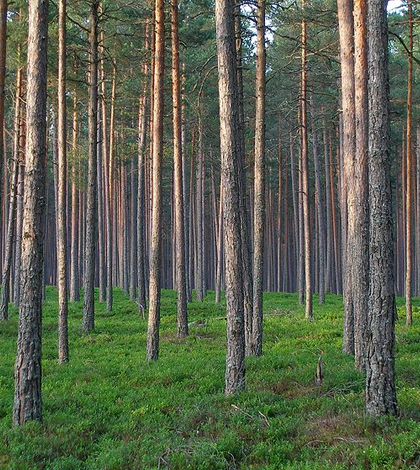Combating Climate Change Through Forest Management About More Than Carbon Capture

Scientists have known for years that forests absorb and sequester carbon from the atmosphere, making these ecosystems potentially valuable tools for mitigating the impacts of climate change. But forests also interact with the climate in other, more complicated ways.
Scientists at Dartmouth College led a study and found that forests’ roles in combating climate change extends beyond their capacity for carbon capture, and, in some cases, the climate incentives for earlier timber harvests exceed those involved with long-term growth and carbon storage.
The researchers examined trade-offs in climate change mitigation benefits between three forest ecosystem services: timber provisioning, carbon capture and albedo, or the reflectivity of the land surface. For timber provisioning, forests are cut about every 50 years or so, while management practices focusing on building successional habitat and winter albedo require harvests every few years. A paper detailing the results of the study is published online in Ecological Applications.
Looking at data from 498 forest sites in New Hampshire, researchers found that when managing forests with climate in mind, the best practices depend largely on location.
“Over the past few decades, natural resource managers, ecologists, economists and policymakers have considered managing forests to sequester carbon dioxide and storing it in the form of woody biomass,” said David Lutz, forest ecologist at Dartmouth and lead author on the study. “As policymakers have been focused more and more on mitigating climate change, some of these kinds of platforms have been enacted, most recently through the cap-and-trade program that the State of California has put into place.”
Cap-and-trade policies established by California and other governments provide the private sector with a financial incentive to reduce forest harvest, Lutz explained, giving timber companies a part to play in conservation that’s usually reserved for public sector management. Ideally, these carbon policies give forests more time to grow and increase in biomass, maximizing the amount of carbon sequestered over time.

In forests at higher elevations, where tree canopies can block out the reflective properties of snowpack below, harvesting trees more often provides more climate benefits than allowing them to grow for carbon storage.
But Lutz says forests serve another function that isn’t as widely discussed as their carbon-storing properties.
“One way is quite simple: they alter the reflectivity of the land surface,” Lutz said. “Forests, especially needle-leaf species like balsam fir and white spruce, are particularly dark, particularly when compared to a light surface like snow or ice.”
High albedo can mitigate the effects of climate change by reflecting sunlight away from the Earth, keeping it cool. The polar ice sheets are significant sources of albedo on Earth, but with much of the ice on the planet slowly melting away, their impact is decreasing, making other sources of reflectivity all the more important.
On average, the researchers found that harvesting timber on a 94-year rotation provided the best results for diminishing the impacts of climate change. But in forests at higher elevations, where tree canopies can block out the reflective properties of snowpack below, optimal rotation rates were significantly shorter.
“We were fairly surprised that, in a few places, the benefits of having regular cuts — every five years or so — were greater than if the forests were left standing to store carbon,” Lutz said. “This did not happen too often, but we thought it was important to emphasize because these kinds of calculations are not taken into consideration in climate policy frameworks, and we showed that sometimes carbon-centric policies may not be the most effective way for combating climate change.”
So, while in many cases, carbon credit programs offer well-rounded benefits to companies and the environment, Lutz said that cap-and-trade platforms need to be more specifically tailored to individual forest projects.
“I have been to meetings where foresters and managers have lined up to hear about how to be on the receiving end of these carbon credits; everyone wants to know how they can obtain some of this new revenue stream,” Lutz said. “What we found is that the platform needs to be particularly careful in how it approves different forest projects, specifically with respect to albedo, and we put forward a methodology by which we can assess a project’s effectiveness.”
The researchers are continuing to work with partners across the U.S. and in the international community to refine their models and better apply their research, Lutz said.
Top image: Pine forest. (Credit: Hannu)




0 comments